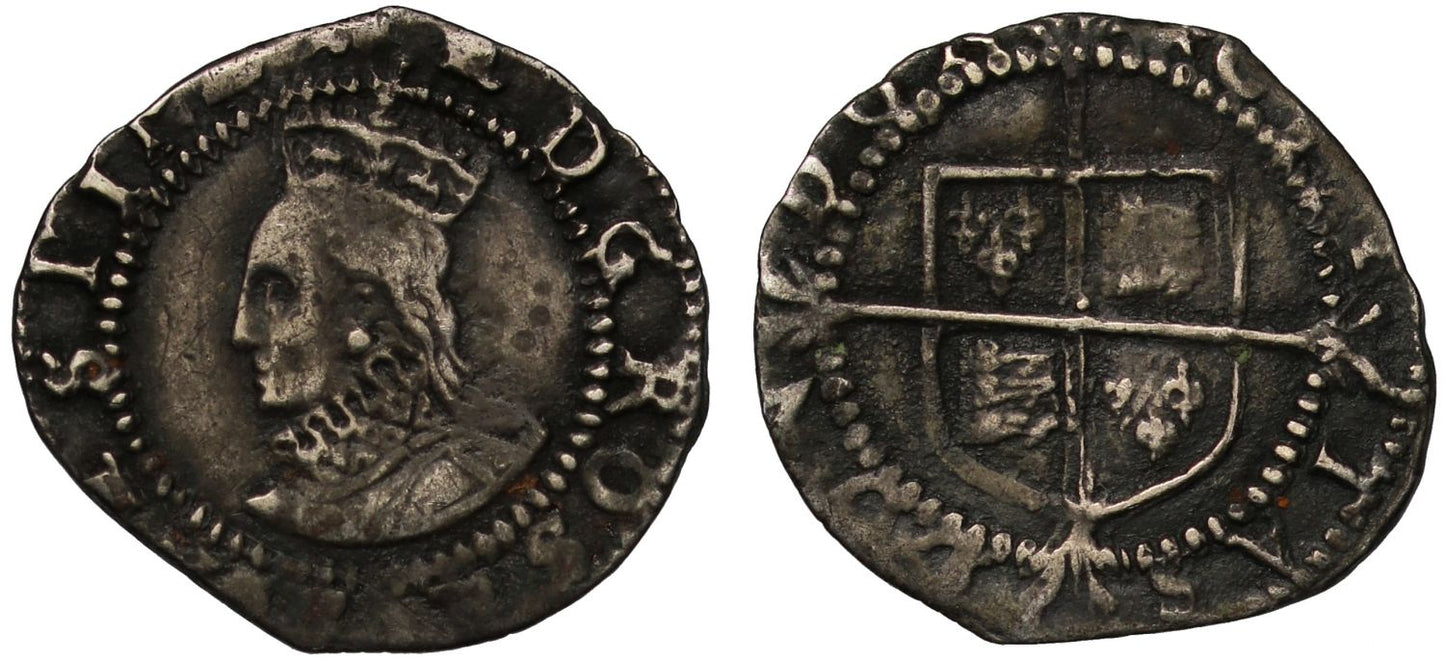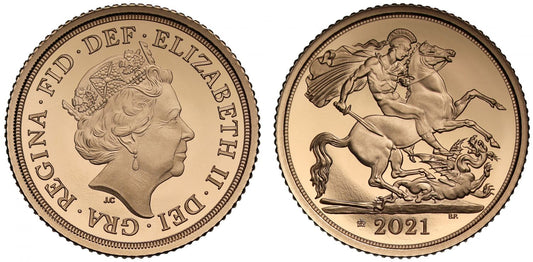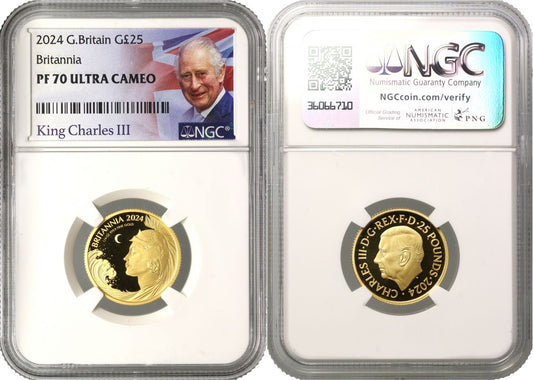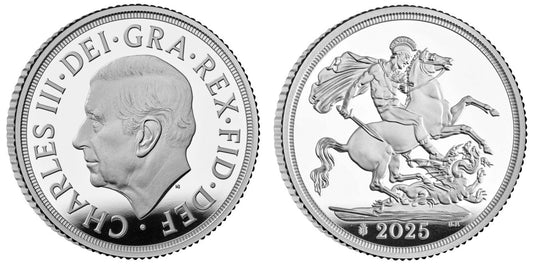FAQs
What makes a coin valuable?
I have coins to sell, what’s the next step?
How will my purchases be shipped?
What happens if I’m not entirely happy with my purchase?
Elizabeth I Penny, Sixth issue, mm. woolpack
Elizabeth I (1558-1603), silver Penny, London Mint, sixth issue (1582-1600), crowned bust left, inner and outer beaded circle surrounding, initial mark woolpack (1594-96) both sides, E. D. G. ROSA. SINE. SPINA. rev. long cross fourchee over quartered shield of arms, CIVI TAS LON DON, weight 0.49g (N.2017; S.2580). Toned with a good face, a bold very fine.
The abbreviated Latin legends translate as on the obverse, "Elizabeth, by the grace of God, a rose without a thorn." and on the reverse as "City of London."
Elizabeth was born on the 7th September 1533 to Anne Boleyn and King Henry VIII but within two years her mother had been beheaded, and her birth along with half-sister Mary's declared illegitimate. It was only by the Third Act of Succession of 1543 that their legitimacy was re-instated and subsequently younger Half-brother Edward, inherited the throne on their Father's death in 1547. After a succession crisis her older sister Mary Tudor came to the throne and ruled till 1558. Elizabeth was at one point implicated into a rebellion by Thomas Wyatt and spent two months imprisoned in the Tower, but upon the gestation of the first phantom pregnancy of Mary, was released to witness what became a non-event, and after a second episode of ghost pregnancy Mary named Elizabeth as her successor in May 1558 whilst weak and ill from uterine problems. Mary died on 17th November 1558 and Elizabeth ascended the throne with her coronation on the 15th January 1559. Her Long reign of near 45 years was accompanied by wise counsel and was what became known as the Elizabethan era. Elizabeth became known as the Virgin Queen never marrying any of the potential suitors that came her way. Elizabeth first re-established Protestantism becoming Supreme Governor by Act of Supremacy of 8th May 1559, followed by the Elizabethan Religious Settlement evolving by 1563 into the Church of England and effectively the end of the English reformation. Looking towards Scotland she opposed the French presence there via her cousin Mary Queen of Scots and feared invasion, and a force was sent into Scotland to aid protestant rebels leading to the Treaty of Edinburgh in 1560 removing the French threat. Mary Queen of Scots returned from France in 1561 and refused to ratify the treaty. Mary married Henry Darnley in 1565 who like herself was connected to the succession of the English throne, and after his murder in 1567 she married one of the conspirators James Hepburn fourth Earl of Bothwell, leading Elizabeth to confront Mary of the error of her ways leading to her imprisonment at Loch Leven Castle and abdication in favour of her infant son James VI. Mary escaped Loch Leven in 1568 but was recaptured in England where she then spent nineteen years imprisoned, but all the time she remained alive, a rebellious Catholic cause grew stronger and eventually Mary was beheaded at Fotheringhay Castle on 8th February 1587. Otherwise, Elizabeth's reign was known for the rise of theatre and plays, the most well-known playwright being William Shakespeare, and for the great voyages of Sir Francis Drake and Sir Walter Raleigh the latter bringing back tobacco and potatoes from North America as well as much captured Spanish treasure in 1580, for which he received a knighthood. Elizabeth was quite defensive through her reign though she had forces briefly occupy the Dutch port of Le Havre in 1563 hoping to negotiate an exchange for the recently lost Calais to no avail. The next foray overseas was not till 1585 sending forces to aid Dutch rebels against Philip II for which some wonderful gold Ryal coins were minted especially to fund the expedition in Holland under the Earl of Leicester. The campaign ultimately failed however by December of 1587 and the biggest threat to these islands came the following year with the Spanish Armada. Sir Francis Drake had raided Cadiz destroying much of the Spanish fleet in 1587 so Philip II decided to take revenge on England and sent a vast Armada on 12th July 1588. It was by a combination of miscalculation and the might of the English fire ships on 29th July that dispersed the Armada forcing it to sail around the UK experiencing rough weather and heavy seas, especially north of Ireland to the west of Scotland where ships were wrecked. Elizabeth gave one of her most rousing speeches at Tilbury Essex whilst still unaware of the Armada's ultimate fate on 8th August and luckily no invasion force came. Elizabeth sent an English Armada a year later of 150 ships led by Sir Francis Drake but suffered a rousing defeat with 40 ships lost or captured. North America was also being explored in this reign and Sir Walter Raleigh brought colonisers to the new lands and the territory of Virginia was named after the Virgin Queen. The East India Company also commenced at the end of her reign with a charter of 31st December 1600 and their own portcullis coins issued for trade which ultimately failed, but the company went from strength to strength in succeeding decades. The last Tudor Queen died on 24th March 1603 at Richmond Palace and the succession which had been planned since 1598 in secret by Robert Cecil, as the Queen would not name her successor, went into motion with the son of Mary Queen of Scots James VI uniting the thrones of Scotland and England as James I.
Capital City London upon the River Thames following Roman occupation, minted some of the earliest Saxon coins with gold Thrymsas and silver denarii with a "Londuniu" signature. Mercian Kings beginning with Offa minted coins there, but the first coin to actually say City of London upon it is the unique Ludica portrait Penny that was found in 2016, followed by subsequent coins of Ecgberht. In 871 the Danes wintered in London for the first time but was King Alfred of Wessex who settled and fortified the capital circa 880 to resist further invasions. Edward the Elder incorporated the City in Wessex in 911 and it resisted a major attack in the reign of Aethelred II in 1009. However, London submitted to the Danish Swein in 1013, but three years later the citizens accepted Eadmund Ironside as King and resisted a siege by Canute.
Later unsettled times occurred in the anarchy period of the reign of King Stephen, remaining loyal to the King except for a few months in 1141 when Empress Matilda was admitted but within a short time expelled. Coinage activity here has been mostly constant throughout history from the Romans until the reign of our current Queen and only moving out to Wales from 1969.
Provenance:
Ex Shirley-Fox Collection and subsequent bequest to Christopher Blunt.
Ex C. E. Blunt gifted to B. H. Ian. H. Stewart.
Ex Lord Stewartby Collection, part V, Spink Coin Auction 243, 28th March 2017, lot 1766 part.
Ex Collection of an English Doctor part III, Sovereign Rarities fixed price list online September 2022.
FAQs
What makes a coin valuable?
I have coins to sell, what’s the next step?
How will my purchases be shipped?
What happens if I’m not entirely happy with my purchase?













